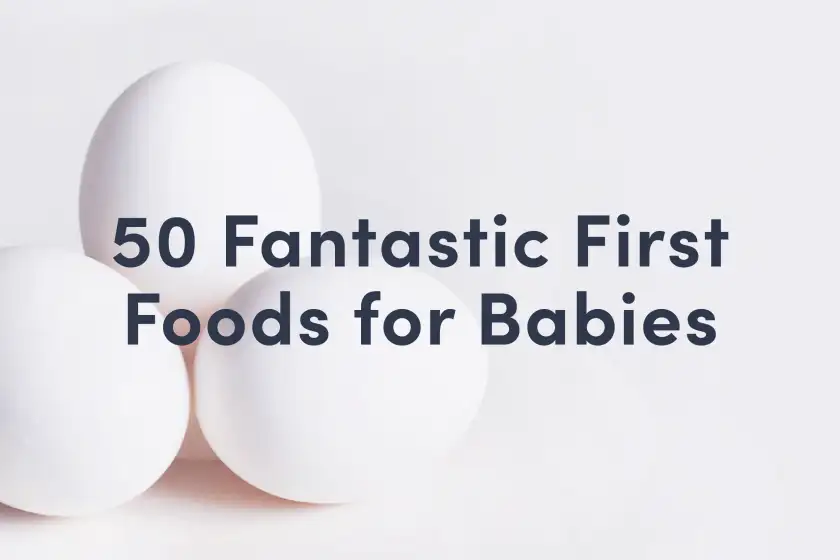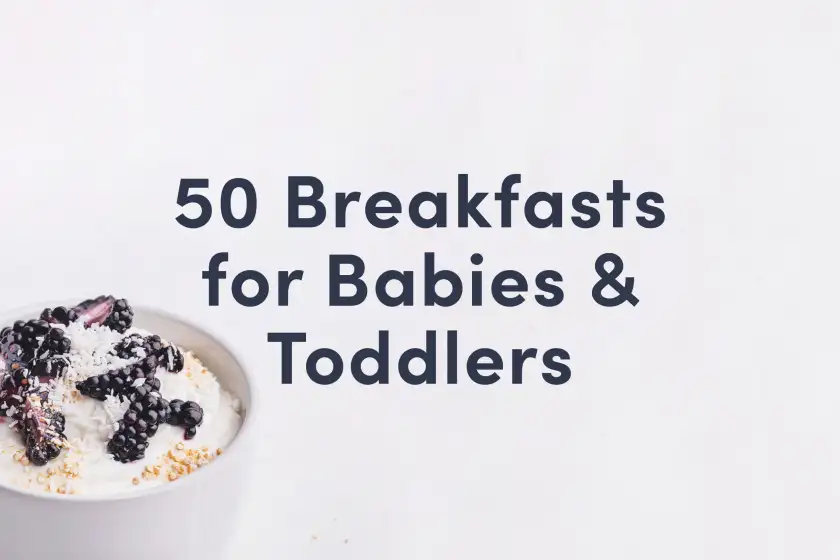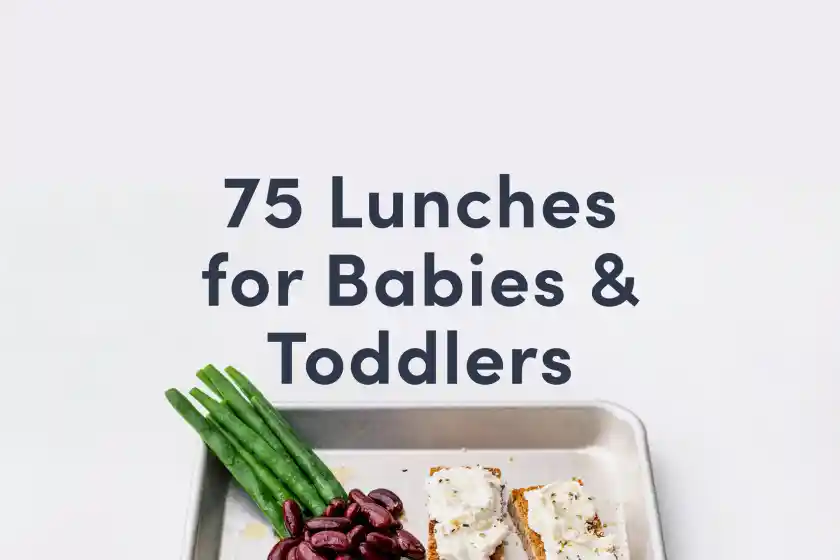Wheat
Grain
Age Suggestion
6 months
Iron-Rich
Yes
Common Allergen
Yes

When can babies have wheat?
Wheat may be introduced as soon as baby is ready to start solids, which is generally around 6 months of age.
The nutty, nutritious wheat plant has come a long way since prehistoric times when humans began growing and eating the ancient grain. Now one of the world’s most cultivated cereal grains—second only to corn—the wheat plant has an extensive family tree with many varieties to try, from einkorn to emmer, farro to freekeh, semolina to spelt. However, one type of wheat dominates the worldwide market: common wheat, or “bread wheat” as it is sometimes called because of its popularity in baking. At harvest time, farmers thresh the seed from the grass, and from there, the grain kernels are processed to create hundreds of food products.
Is wheat healthy for babies?
Yes. Wheat offers plenty of carbohydrates plus some fiber and protein, too. Exact nutrition depends on the form of the wheat:
Wheat Berries. This is the whole grain kernel of wheat with the inedible husk removed. A wheat berry can be milled to make flour, but when served as a whole grain, it offers lots of nutrition thanks to the kernels’ key components: the fiber-rich bran, the starchy endosperm, and nutrient-packed germ. These parts of the kernel contain lots of fiber, protein, and nutrients like iron, magnesium, selenium, and B vitamins. Wheat berries contain beneficial plant compounds like carotenoids, lignans, and phytosterols that can support heart health.
Whole Wheat Flour. When wheat berries are milled to make flour, sometimes producers include the bran and germ, which makes whole wheat flour. Pound for pound, whole wheat flour contains more calories, protein, fiber, and nutrients like iron, zinc, and B-vitamins than white flour.
White Flour. White flour offers plenty of carbohydrates to energize growing babies. White flour comes in many varieties: all-purpose, bleached, cake, enriched, pastry, self-rising, unbleached, and wheat flour. Each type has slight variations in the amount of nutrients, with enriched flours generally offering the most nutrition of white flours.
Is wheat a common allergen?
Yes, wheat (alongside other gluten-containing cereals grains) is classified as a common allergen by the World Health Organization. Wheat is one of the most common food allergens in children. Fortunately, two-thirds of children outgrow the allergy by their 12th birthday.Also, keep in mind that breads often contain multiple grains and other added ingredients, such as milk, sesame, and soy, which are also common allergens.
It is important to note that wheat allergy is not the same as celiac disease. While a wheat allergy may be outgrown, celiac disease requires a strict, lifelong gluten-free diet and lifestyle. A gluten “allergy” is typically a misnomer, often in reference to celiac disease.
If you are concerned that baby may be allergic to wheat, talk to a pediatric health care professional before introducing wheat at home. As you would when introducing any new food, start by offering a small quantity for the first few servings and watch closely for any signs of an allergic reaction. If there is no adverse reaction, gradually increase the amount over future meals.
While rare, some individuals have a condition known as wheat-dependent, exercise-induced anaphylaxis, which can result in a severe allergic reaction if the person exercises within a few hours after eating wheat. These patients should avoid eating wheat in the four hours before strenuous activity.
Lastly, individuals with Oral Allergy Syndrome (also known as pollen food allergy syndrome) may be sensitive to wheat, particularly those who are allergic to grass pollen. Oral Allergy Syndrome typically results in short-lived itching, tingling, or burning in the mouth, and can also result in gastrointestinal distress (abdominal pain, cramping, bloating, or diarrhea) in some cases - especially if the grain was not properly digested and the proteins reach the lower GI tract intact. While uncomfortable, it is unlikely to result in a dangerous reaction.
Is wheat a choking hazard for babies?
No. Cooked wheat berries present a low risk when safely prepared for a child’s age and developmental ability, though many products made from wheat could pose an increased risk of choking. To reduce the risk, prepare and serve wheat in an age-appropriate way as described in the How to Serve section. Note that loose, cooked wheat berries are more likely to scatter in the mouth, which can cause gagging or coughing. If baby is struggling to manage the food, consider mashing the grains with the back of a fork or adding broth, milk, or a sauce to help the grains stick together. As always, make sure you create a safe eating environment and stay within an arm’s reach of baby during meals.
Learn the signs of choking and gagging and more about choking first aid in our free guides, Infant Rescue and Toddler Rescue.
Videos
Can babies eat gluten?
Yes, as long as a child does not have celiac disease, non-celiac gluten sensitivity, or wheat allergy. Read more in our Celiac FAQ.
Gluten is a type of protein in wheat and other grains such as barley, rye, and some oats. Gluten is edible, but it becomes problematic for individuals with celiac disease, an autoimmune disease, characterized by damage of the small intestine when gluten is consumed. Some individuals may be sensitive to gluten but may not have an allergy or celiac disease. In some cases, this may be non-celiac gluten sensitivity. Talk to a health care provider if you are concerned about issues related to gluten and digestion.
How do you serve wheat to babies?
Every baby develops on their own timeline, and the suggestions on how to cut or prepare particular foods are generalizations for a broad audience.
6 months old +:
Wheat porridge is a simple way to introduce the grain to baby, and makes an excellent vehicle for new flavors: your favorite spices, mashed fruits and vegetables, or finely ground nut, for example. You can use milled wheat products like baby cereal, cream of wheat, or wheat farina, or you can make porridges from the whole wheat berries as long as they are cooked in the liquid until completely soft. You can also use wheat flour to make pancakes or breads and other baked goods, or serve pastas made from wheat.
9 months old +:
Continue to serve wheat porridges and pancakes, as well as meatballs and patties with cooked wheat berries mixed in. Offer these foods cut into bite-sized pieces to help babies practice their developing pincer grasp, where the index finger and thumb come together to pick up smaller pieces of food. At this age, you can also offer cooked wheat berries on their own or as part of a grain salad, using a fork to flatten the grains to make them easier for self-feeding.
12 months old +:
Continue serving cooked wheat berries on their own and as part of dishes like grain salads, porridges, or stews. Offer milled wheat in the form of warm cereals and use wheat flour in the family’s favorite baked goods. At this age, consider offering the food with an age-appropriate utensil for practice. If the child is not interested in using utensils, keep in mind that using utensils can be exhausting for new eaters, and many children toggle back and forth between feeding themselves with their fingers and utensils. Try not to apply too much pressure—consistent and accurate utensil use will come in due time—probably after the second birthday.
Introducing common allergens to babies can be scary. We have a First 100 Days plan that walks you through exactly when to introduce each one with the right amount of time between them.
Our Team
Written by
Expert Tips Delivered to Your Inbox
Sign up for weekly tips, recipes and more!
Copyright © 2024 • Solid Starts Inc








